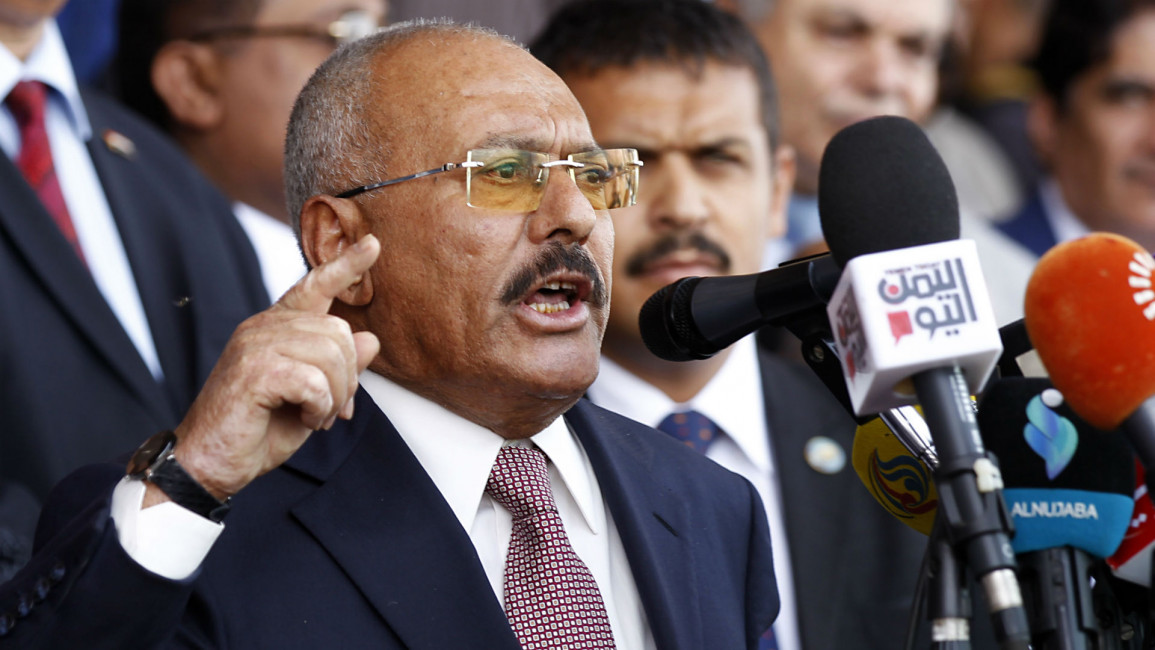
Saleh killed: Timeline of three years of conflict in Yemen
Three years after Houthi rebels captured the Yemeni capital Sanaa with the help of forces loyal to ex-president Ali Abdullah Saleh, Houthi fighters have killed Saleh.
The two sides have fought deadly streets battles this past week in Sanaa in clashes the security sources say killed around 60 people.
Here is a timeline of the conflict in Yemen:
Saleh forced to quit
Inspired by regional uprisings in what becomes known as the Arab Spring, Yemenis take to the streets in early 2011 to demand the departure of Saleh, who has ruled with an iron fist since 1978.
Under pressure from the Gulf monarchies, Saleh agrees in November 2011 to hand over power in exchange for immunity from prosecution for him and his family, after 11 months of protests and deadly clashes.
A presidential election is held in February 2012. Saleh's deputy and only candidate Abedrabbo Mansour Hadi, seen as a man of consensus, is sworn in days later.
Rebellion erupts, Sanaa is seized
Efforts to draw up a new constitution for Yemen faces difficulties and tensions intensify between the majority Sunnis and minority Shia, who feel marginalised after Saleh's departure.
Rebels from the Houthi group launch an offensive in 2014 and push towards Sanaa from their northern stronghold of Saada, intent on expanding a hoped-for autonomous unit in a future federation.
On September 21, 2014, they storm the capital and seize the government headquarters, state radio and military sites after days of clashes. More than 270 people are killed.
The rebels, backed by Iran, allied with forces loyal to Saleh, a former foe who cracked down on the Houthis while president.
By January the rebels and their allies have also taken control of the presidential palace. Hadi flees to Yemen's second city, Aden, which he later declares is the "provisional capital".
'Decisive Storm' and failed truces
On March 26, 2015, nine regional countries in a Sunni Saudi-led coalition launch operation "Decisive Storm" with air strikes on the rebels to defend embattled Hadi and his internationally recognised government.
They claw back some territory but also have to deal with increasing attacks by Sunni jihadists allied to al-Qaeda and the Islamic State group.
The UN and US organise three rounds of fruitless peace talks over 2015 and 2016. Seven truces are agreed, but all are broken.
Cracks on both sides
In April 2017 Hadi fires Aden governor Aidarous al-Zoubeidi, who then goes on to form a council that aims to "pursue the mission of liberating" South Yemen.
The following month, thousands of Yemenis in the south - which was an independent state until 1990 when it was unified with North Yemen - march in support of Zoubeidi.
There are splits in the rebel camp, too, with the Houthis on August 23 calling Saleh a "traitor" after he dismissed the Iran-backed group as a "militia" in a speech.
The next day hundreds of thousands of Yemenis attend a rally marking 35 years since the founding of Saleh's General People's Congress (GPC) in a major show of support.
The tensions erupt into clashes between the allies in which a colonel loyal to Saleh and two rebels are killed.
Violence erupts anew on November 29 in Sanaa, killing and wounding dozens.
On Saturday, Saleh reaches out to the Saudi-led coalition battling the Houthis, offering to "turn the page" if it lifts a crippling blockade on the country.
The Houthis accused him of staging a "coup against our alliance".
On Monday, Houthi fighters killed Saleh as he attempted to flee the capital to his hometown of Sanhan.




